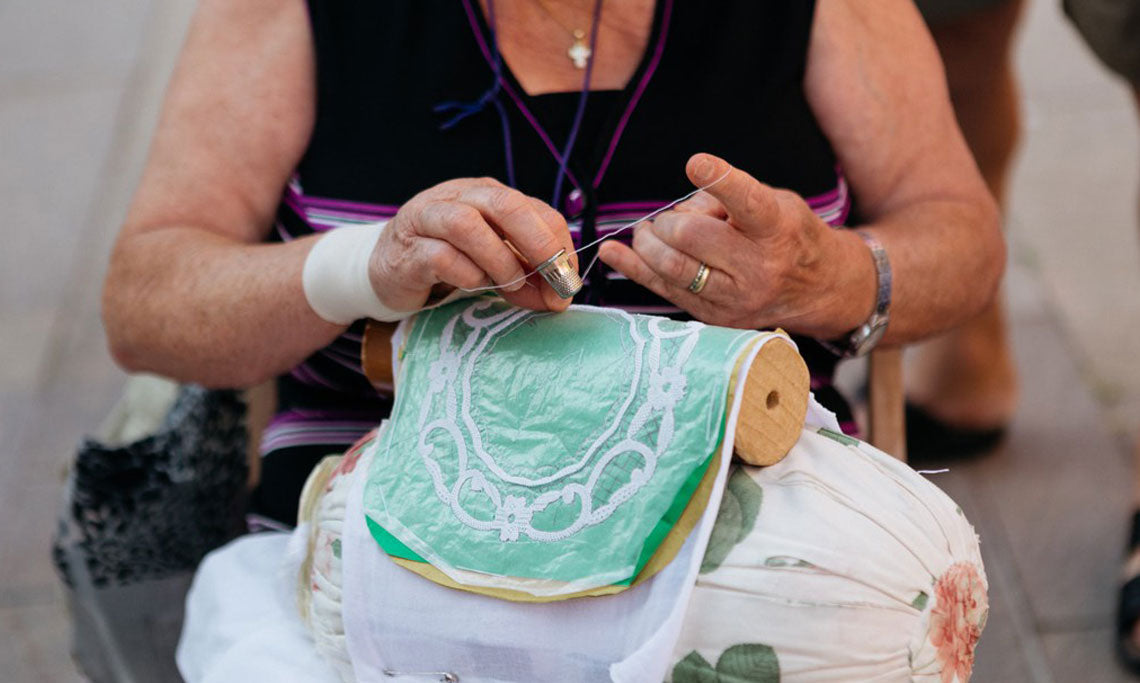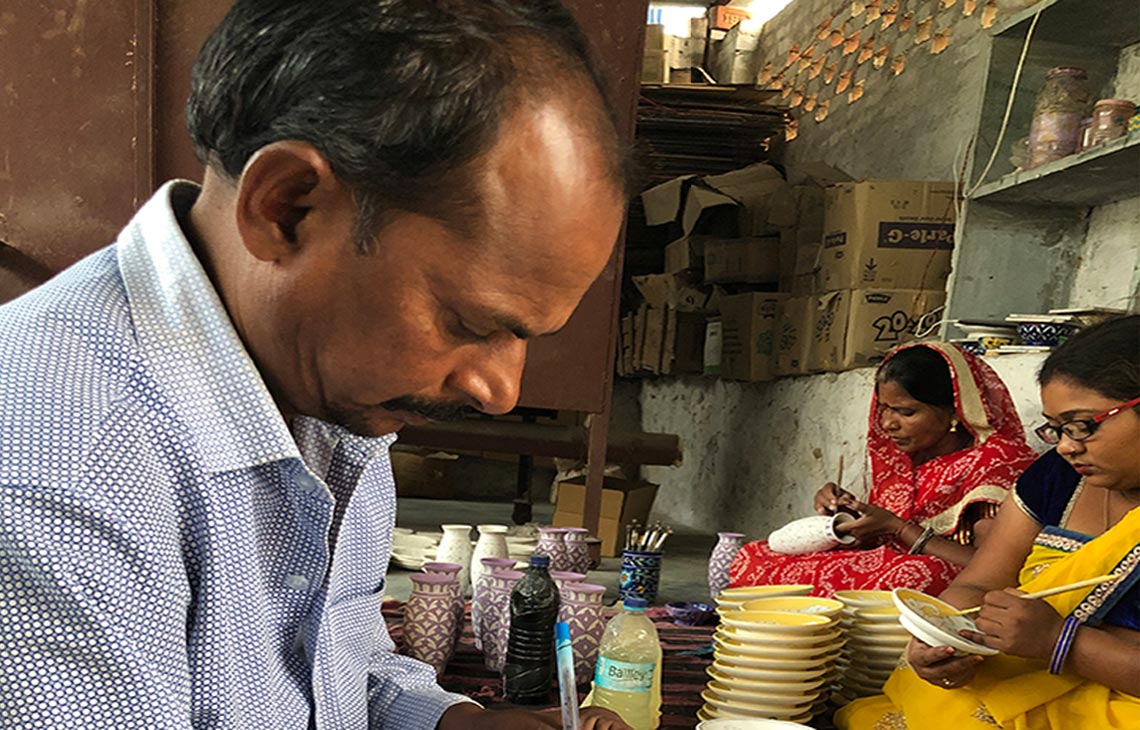Article: The Lacemakers of Burano

The Lacemakers of Burano

The Lace of the Island of Burano
Là Fuori pays close attention to the craftsmanship skills practiced more by women, who are mothers and who, with their own creations, an example of life generating life. In our Italian journey, how can we not speak of the “refined warriors of the thread” who for centuries have been working quietly and undisturbed on a colorful fishing island, Burano, off the coast of Venice.
Burano lace started mainly as a domestic activity led by noblewomen, who gave birth to real embroidery workshops.

A Legend About Women’s Competition
One of the most famous legends of Burano tells a story of an ancient fisherman who promised to marry a young girl on the island. He was tempted by the singing of the sirens during an exit to the sea, towards the East. In order for the boy to resist their charm, he received a gift from the queen, fascinated by his loyalty.
So as the story goes, a mermaid hit the side of the boat with its tail and the foam created by the movement of the water took shape of an elegant wedding veil for the young bride. When the wedding day arrived, the girl was admired and envied by all the young people of the island. This started a kind of a competition. All the young women began to imitate the veil lace blessed by the Queen of the Sea, using increasingly thin needle and thread, in the hope of creating more and more beautiful embroidery for their wedding dresses.

THE BIRTH OF LACE
The first Burano laces date back to the 1500s. Period in which the lace was worked exclusively in stately homes, using needle and thread without the support of a canvas. The “point in the air” was made and geometric designs were made with it, flowers, animals, scrolls and racemes. These embroideries soon spread to Europe.
Burano’s lace makers were even called to France to start an important lace creation. The manufacture of lace, for the most part, took place within the Lace School. Noteworthy works are now exhibited in a historic building located in the square of Burano, the Lace Museum.
Unfortunately, with the fall of the Serenissima Republic, the activity suffered a sharp decline. At the end of the nineteenth century, thanks to the propaganda of Mrs. Cencia Scarpariola, a well-known lace maker from Burano, the new era of lace began. New stitches were introduced so as to transform the embroidery into real works of art.

THE Realization
For the creation of a lace, more than five interventions had to be performed, which usually came and are still done by different people. Each of the lace makers was specialized in the operation that she could perform faster, in order to be most profitable. Most of the lace makers worked by the piece.
There were ladies in charge of preparing the drawings. Others made hemming, i.e. machine stitching on the various layers of fabric and paper. It acted as a plot on which the first lace maker, after the fabric had been attached to the bobbin, made the ghipur or Burano stitch on the whole design. Finally, the relief was carried out which highlighted the design with the various finishes. As a last step it was necessary to detach the lace from the paper by cutting all the machine-made seams.


An ART That keeps company
The Burano Lace School was founded in 1872 by the Countess Andriana Marcello to recover and revive a centuries-old tradition.
In 1978, after the closure of the school, a consortium created by the Venetian public bodies and the Andriana Marcello Foundation, began a careful activity of rediscovery and cultural enhancement of Buranello lace. There are very few ladies who know the art of needle lace today and preferably work in their homes.
Mostly elderly, gathered in small groups at the door of their colorful houses on the island, these women after centuries continue to embroider ancient textures, showing the youngest grandchildren the beauty of dialogue and creation. Burano lace in fact represents a real moment of sharing and dialogue between women, in which to give vent to everyday thoughts and find, point by point, a meeting with people close to us.
